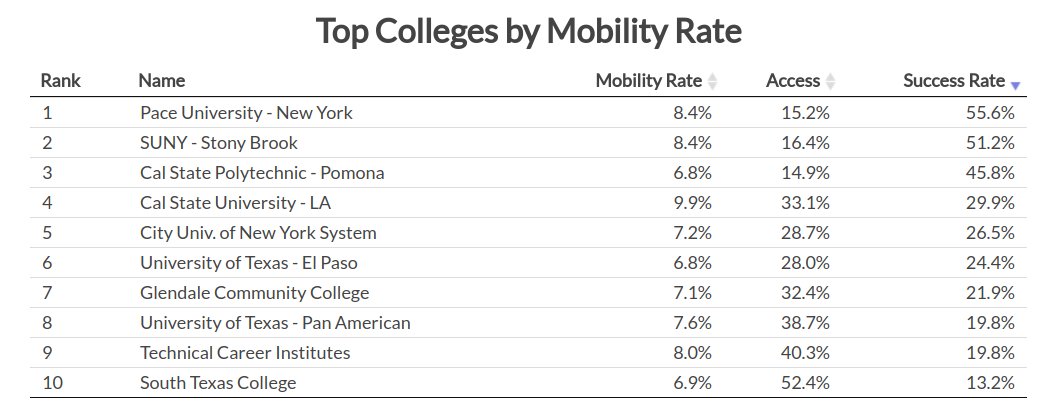At a time when parents of college-bound students are waiting anxiously for news about acceptances and wondering about their children’s future, a new study from the Equality of Opportunity Project is out with a new way of evaluating the effectiveness of institutions across the country.
The report used publicly available data to establish what it calls a “mobility rate” for each college or university in the country. The rate is a product of two factors: the percentage of its students whose parents are from the bottom one-fifth of the income distribution (the Access Rate) and the percentage of those students who eventually find themselves in the top earnings percentile (the Success Rate.)
Related: Why the Political Mainstream Keeps Failing America’s Workers
The result is a list of top colleges that looks nothing like typical college ranking schemes, with leafy private schools yielding place to an assortment of mostly urban, mostly public institutions. Also, much higher in the rankings than might be expected were some for-profit institutions.

Excluding smaller institutions, the top school for mobility is California State University Los Angeles, with a 33.1 percent of students coming from families in the bottom quintile and 29.9 percent of them finding their way into the top quintile of earners. The school with the highest success rate for students from low-income families is private, but rather than an Ivy League institution, it’s New York City-based Pace University, where 55.6 percent of low-income students eventually become top-tier earners.
One interesting note is that while the schools the report refers to as “Ivy Plus” -- meaning the Ivies plus Stanford, Chicago, MIT, and Duke -- don’t score very highly on mobility relative to more urban public institutions, they are much better at vaulting students from low-income backgrounds into the top one percent of earners. However, combined with an access score, even the highest ranking schools don’t break a 1 percent mobility score when the goal is earning more than 99 percent of people in the workforce.





